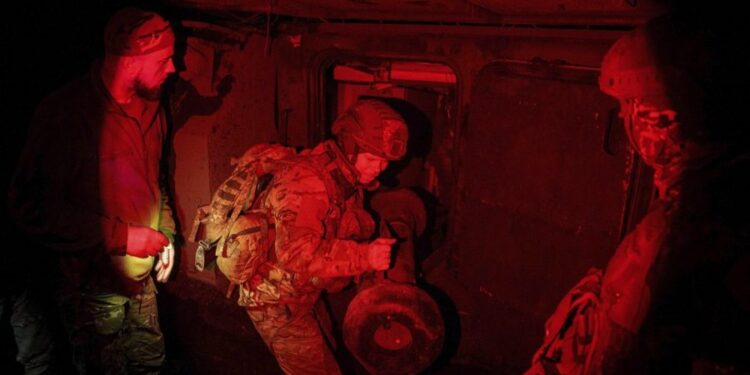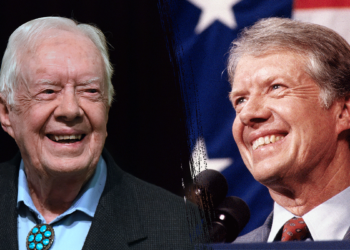
Just as 2024 came to a close, the Pentagon announced a new $2.47 billion military aid package for Ukraine. The package consists of $1.25 billion using Presidential Drawdown Authority and an additional $1.22 billion from the Ukrainian Security Assistance Initiative. Its purpose is “to provide Ukraine with additional capabilities … including missiles for air defense, munitions for rocket systems and artillery; and anti-tank weapons.” Department of Defense Deputy Press Secretary Sabrina Singh also noted that the latest tranche of assistance was the administration’s 73rd drawdown package, as well as the 23rd package provided by the U.S. Agency for International Development.
Opponents of this latest transfer argue that the Biden administration is pushing out as much support for Kyiv as it can before its term comes to an end on Jan. 20. This certainly appears to be the case with regard to the Ukrainian Security Assistance Initiative, which the new package empties of its available funds.
However, the package does not exhaust the $5.6 billion of available Presidential Drawdown Authority funding. Moreover, it appears unlikely that the administration will run that funding down to zero before the Trump team takes over. As an unnamed “senior defense official” acknowledged last month, “$5.6 billion is a substantial amount of authority … there could be remaining authority that could transition and be available for the next administration to use.”
That of course, depends on whether a Trump administration is willing to continue American support for Ukraine and, even if it does, whether it would do so to the same degree as its predecessor.
The latest aid package for Ukraine is notable for what it does not include: long-range ATACMS, or even the system’s shorter-range version; F-16 aircraft; Patriot missile batteries; additional HIMARS missile defense systems (other than ammunition for HIMARS already in Ukraine); and armored vehicles of any kind.
Both the HIMARS and the older Hawk Phase III missiles that are included in the latest transfer are unequal to the task of shooting down ballistic missiles, such as the new Oreshnik missile that Russia began to fire at Ukrainian targets in mid-November. Although Russia claims that the Oreshnik cannot be shot down by current Western air defenses, Ukraine has counter-claimed that it has shot down the missile, presumably with the Patriot PAC-3 that it currently fields. Why the administration has hesitated to send more upgraded Patriots to Kyiv, since Patriot is obviously a purely defensive system, is difficult to understand given its not very secret fear that Trump will bring a halt to all military assistance to Kyiv.
One can only conclude that even in the 11th hour of its tenure, the Biden administration remains fearful of a Russian nuclear response should it upgrade the quality and capability of the weapons it transfers to Ukraine, or add to the advanced weaponry that Kyiv already possesses. It should be clear by now, however, that Putin’s nuclear saber-rattling was only that and nothing more. And with Trump taking office in less than three weeks, it is very unlikely that Putin would do anything to inflame the new administration.
While Trump has often been accused of acting like a bully, there is little evidence that, like the classic bully, he can be easily intimidated. On the contrary, Trump did not hesitate to order military operations against adversaries that he felt were acting against American interests as he defined them during his first term.
Trump certainly showed no fear of Iranian reprisals when he ordered the drone strike in Baghdad that killed Quds Force leader Qasem Soleimani. And he did not hesitate to trade insults with North Korean dictator Kim Jong Un after three failed meetings between the pair. Putin surely knows that any threats he might issue against a Trump-led U.S. would only result in counter-threats from the president, and could well prompt Trump to authorize aid to Ukraine that he might not otherwise have approved.
There probably was less to Russia’s nuclear threats than the Biden administration made of them; the president and his team took those threats far too seriously. Consequently, they deterred themselves and delayed sending critical advanced weapons systems for which Ukrainian President Volodymyr Zelensky urgently pleaded for more than two years.
Whether Trump will maintain American support for Kyiv remains uncertain. But what is certain is that threats of any kind will not deter the incoming president.
Dov S. Zakheim is a senior adviser at the Center for Strategic and International Studies and vice chairman of the board for the Foreign Policy Research Institute. He was undersecretary of Defense (comptroller) and chief financial officer for the Department of Defense from 2001 to 2004 and a deputy undersecretary of Defense from 1985 to 1987.







